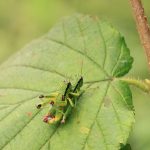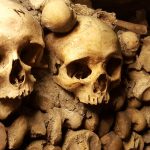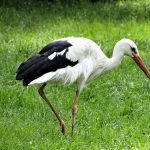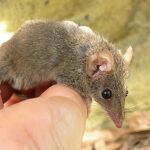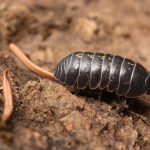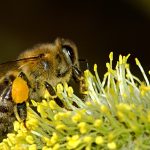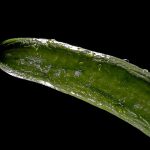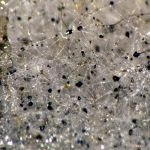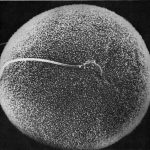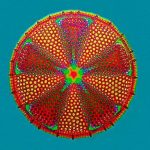Para una navegación general por el sitio web no es necesario que el usuario facilite ninguna información extra aparte de aceptar las Políticas de Cookies que, a efectos prácticos, aparece una vez que accedes a cualquier dirección web de www.hidden-nature.com en la parte inferior de su pantalla, ofreciendo la posibilidad de estar de acuerdo con el uso de Cookies. Con el fin de que el usuario comprenda qué son las Cookies y para qué las utilizamos, se lo explicamos a continuación:
Una cookie (o galleta informática) es una pequeña información enviada por un sitio web y almacenada en el navegador del usuario, de manera que el sitio web puede consultar la actividad previa del usuario. Estos pequeños archivos de texto nos permiten ofrecer al usuario una más eficiente la experiencia. Sus principales funciones son:
- Llevar el control de usuarios: cuando un usuario introduce su nombre de usuario y contraseña, se almacena una cookie para que no tenga que estar introduciéndolas para cada página del servidor. Sin embargo, una cookie no identifica solo a una persona, sino a que comprende al ordenador, el navegador que utiliza y dicha información del usuario ya comentada.
- Conseguir información sobre los hábitos de navegación del usuario, y evitar los intentos de spyware (programas espía), por parte de agencias de publicidad y otros. Esto puede causar problemas de privacidad y es una de las razones por la que las cookies tienen sus detractores.
Las cookies pueden ser borradas, aceptadas o bloqueadas según desee, para esto sólo debe configurar convenientemente el navegador web. Si no quieres que la información sobre ti quede almacenada en tu equipo, puedes eliminarlas en la sección “Herramientas” y después hacer clic en “Borrar los datos de navegación”.En el teléfono, encuentras esta opción en “Configuración”, después en “Privacidad” y, finalmente, en “Borrar cookies”. Estas instrucciones pueden variar ligeramente dependiendo del navegador que el usuario utilice.
Pero queremos que el usuario comprenda que no estamos intentando enviarle spam, ni es un virus ni nada por lo parecido. Las cookies de este sitio web se usan para personalizar el contenido, ofrecer funciones de redes sociales y analizar el tráfico; con el fin de mejorar su experiencia. La ley afirma que podemos almacenar cookies en su dispositivo si son estrictamente necesarias para el funcionamiento de esta página. Para todos los demás tipos de cookies necesitamos su permiso. Por si el usuario desea consultarlo, esta página utiliza tipos diferentes de cookies.
Su consentimiento se aplica al dominio www.hidden-nature.com. Los datos recogidos y recopilados de todos los tipos de usuario que se comentan en adelante, permanecerán en la web por un plazo limitado a su función (como el plazo de suscripción) o con carácter indeterminado (como el de Newsletter) hasta que el usuario decida extraerlos de la web.
Para el uso general de navegación por la página, no es necesario que el usuario facilite ninguna otra información personal fuera de la comentada previamente con las Cookies. Los casos en los que si permites acceder a tus datos son los siguientes:
- Si el usuario se suscribe a la Newsletter sus datos podrán ser incorporados a un fichero de lista de correo, del cual Hidden Nature es responsable de su gestión y tratamiento. El fin es proporcionar el mejor servicio posible, particularmente para mantener un registro de usuarios, y poder facilitarle información sobre la actualidad científica o novedades que Hidden Nature considere que podrían interesarle. En cualquier momento el usuario es libre de salirse del Newsletter a través de un botón al final de uno de los correos que tengan este fin o, enviando un correo personalmente a Hidden Nature.
- Si el usuario escribe un email a revista@hidden-nature.com o contacto@hidden-nature.com, sus datos serán accesibles a Hidden Nature con el fin de poder darle respuesta a aquella información que solicita.
- Si el usuario escribe comentarios existen una serie de campos que Hidden Nature solicita que rellene al menos un nombre o nick con el fin de poder atenderle personalmente y saber a quién referirnos, el resto de campos son opcionales. Por tanto se recopilan los datos que se muestran en el formulario de comentarios, así como la dirección IP del visitante y la cadena de agentes de usuario del navegador para ayudar a la detección de spam.
- Si subes imágenes a la web deberías evitar subir imágenes con datos de ubicación (GPS EXIF) incluidos. Los visitantes de la web pueden descargar y extraer cualquier dato de localización de las imágenes de la web.
Hidden Nature solo utilizará dichos datos para la finalidad que nos los has ofrecido. Además utilizamos las herramientas de medición de audiencia, que permiten analizar el comportamiento y perfil de los visitantes anónimos, con el objetivo de mejorar el funcionamiento del sitio, esta medición utiliza cookies proporcionados por terceros.
Hidden Nature utiliza Google Analytics, un servicio analítico prestado por Google, Inc., una compañía de Delaware cuya oficina principal está en 1600 Amphitheatre Parkway, Mountain View (California), CA 94043, Estados Unidos (“Google”). Google Analytics utiliza “cookies”, que son archivos de texto ubicados en su ordenador, para ayudar al website a analizar el uso que hacen los usuarios del sitio web. La información que genera la cookie acerca de su uso del website (incluyendo su dirección IP) será directamente transmitida y archivada por Google en los servidores de Estados Unidos. Google usará esta información por cuenta nuestra con el propósito de seguir la pista de su uso del website, recopilando informes de la actividad del website y prestando otros servicios relacionados con la actividad del website y el uso de Internet. Google podrá transmitir dicha información a terceros cuando así se lo requiera la legislación, o cuando dichos terceros procesen la información por cuenta de Google. Google no asociará su dirección IP con ningún otro dato del que disponga Google. Una vez más, el usuario puede rechazar el tratamiento de los datos o la información rechazando el uso de cookies mediante la selección de la configuración apropiada de su navegador como se comentó anteriormente, sin embargo, debe saber que si lo hace puede ser que no pueda usar la plena funcionabilidad de la web Hidden Nature. Al utilizar esta página web el usuario es consciente del tratamiento de información acerca de su persona por Google, en la forma y para los fines arriba indicados.
A continuación mostramos la lista de cookies necesarias y no necesarias.
| COOKIE |
TIPO |
DURACIÓN |
DESCRIPCIÓN |
| _cookie_law_info-* |
persistent |
1year |
Esta cookie es utilizada para saber si usted ha aceptado nuestra política de cookies y no volver a mostrarle el aviso en un futuro. |
| _cookie_law_info* |
persistent |
1year |
Esta cookie es utilizada para saber si usted ha aceptado nuestra política de cookies y no volver a mostrarle el aviso en un futuro. Además con estos datos podremos mostrar o no otras cadenas de código para ajustarnos a su opciones de privacidad. |
| _cookie_notice_acepted, _viewed_cookie_policy |
persistent |
1year |
Esta cookie es utilizada para saber si usted ha aceptado nuestra política de cookies y no volver a mostrarle el aviso en un futuro. |
| _unam, _sharethis_cookie_test_ |
third party |
1month |
El servicio ShareThis utiliza esta cookie de terceros y le permite usar los botones Compartir de cada página en varias redes sociales como Twitter, Facebook, etc. La cookie “_unam” supervisa las páginas web visitadas, la navegación y el tiempo empleado en cada página. El servicio ShareThis solo lo identifica personalmente si se ha registrado por separado con ShareThis y le ha dado su consentimiento. Puede encontrar más información sobre esta cookie aquí: http://sharethis.com/privacy |
| _wordpress*, _wp_* |
session |
1month |
Estas cookies son aquellas obligatorias a usar para todos aquellos que tengan una cuenta con Hidden Nature, ya que sin ellas el usuario no podrá ver el contenido exclusivo, o acceder a su perfil. Si usted quiere borrar su cuenta o no quiere seguir usándola, por favor, escríbanos a contacto@hidden-nature.com y procederemos a eliminar toda la información relativa. |
| Google analytics |
third party |
1year |
Estas cookies de terceros se utilizan para recopilar información sobre cómo los visitantes usan nuestro sitio. Usamos la información para compilar informes y ayudarnos a mejorar el sitio. Las cookies recopilan información en forma anónima, que incluye el número de visitantes al sitio, de dónde han venido los visitantes y las páginas que visitaron. |
| wfwaf-authcookie-(hash) |
persistent |
1month |
Esta cookie es usada por nuestro firewall plugin, y es propia del usuario logueado. Sirve para identificar el usuario logueado del no logueado y permitirle acceso a más o menos áreas. |
| wordpress_test_cookie |
session |
1year |
Comprueba si las cookies está activas para proporcionar una experiencia al usuario apropiada. |
